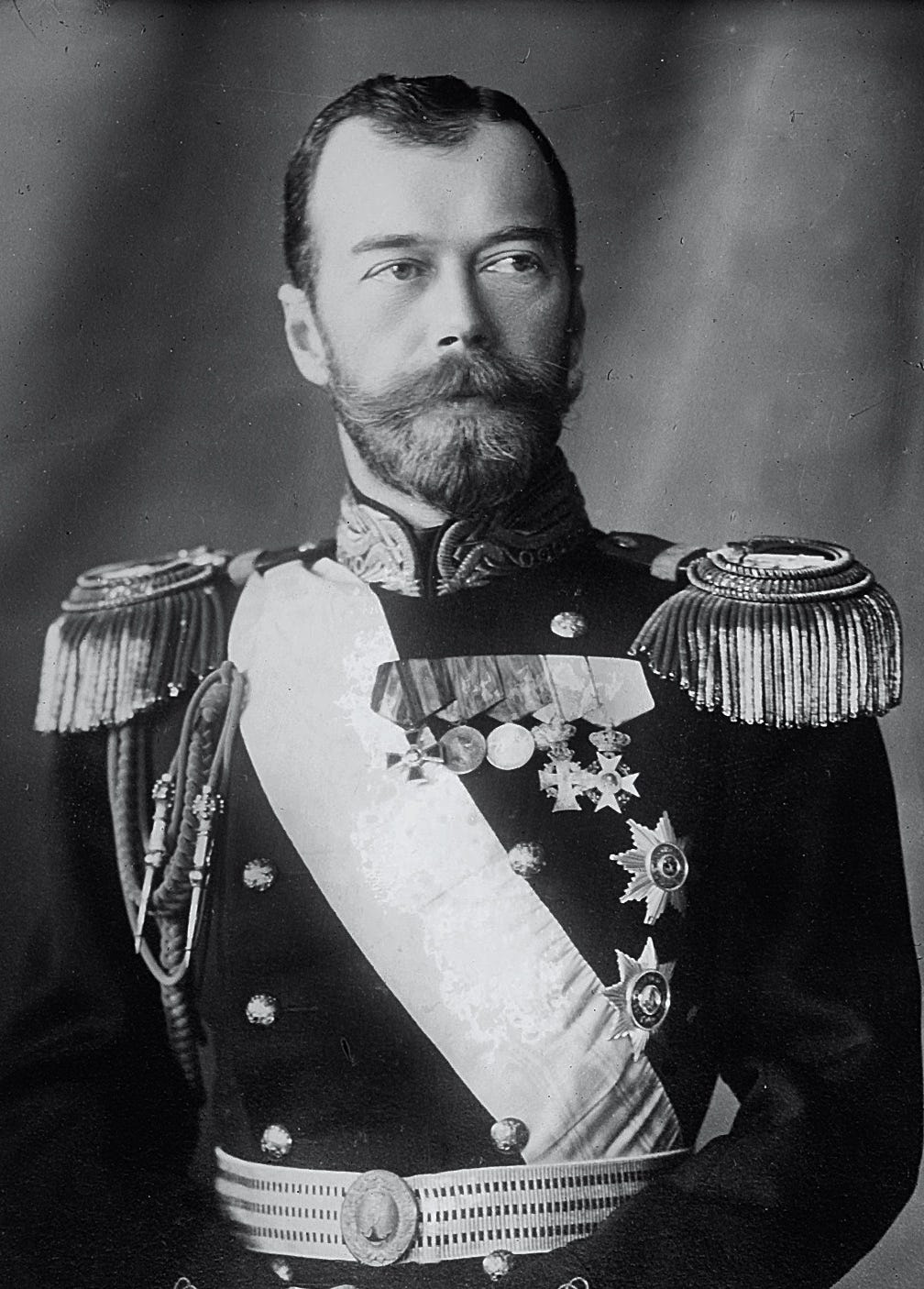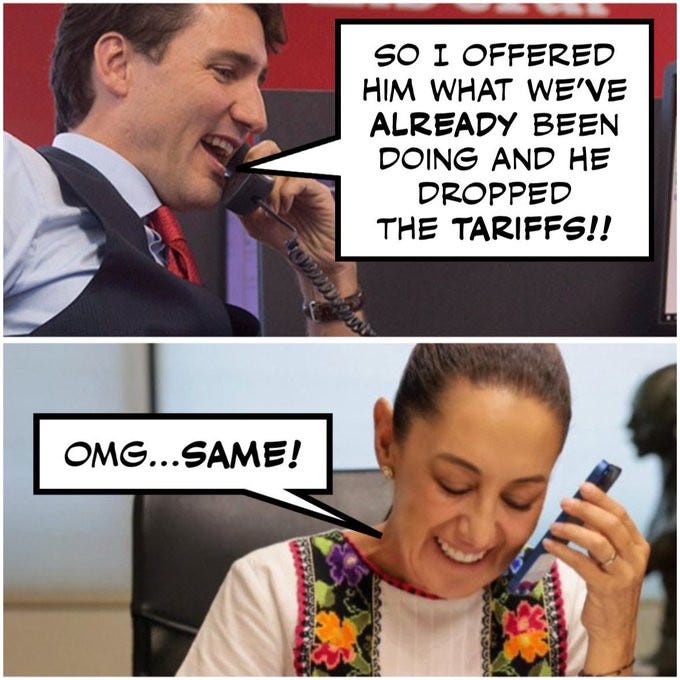The announcement and then rapid capitulation by President Trump on his tariffs on Canada and Mexico (but not China!) engendered a certain amount of mockery on Bluesky. At first, street economists were mocked for not predicting the tariff moves. Then the capitulation generated a round of “told you so’s” by people defending the street economists. This article mainly discusses the normalcy bias of street research, and then finishes off with comments by an enraged Canadian on latest events.
Normalcy Bias at Central Banks
All institutional economic (and financial) research passes through informal internal filters before it is released to the public. Internal disputes are papered over, and the research is tilted to fit the goals of the institution. The researchers working at those institutions know what those filters are, and so their thinking will naturally tend to conform to them. If you are a serious consumer of such research, you need to be aware that these filters exist, and ideally know what they are.
Before discussing the more complicated case of private sector research, I will first discuss how filters show up in central bank economic outlooks.
Central bankers will avoid predicting recessions, on the basis that if the central bank is panicking, the rest of the private sector will jump in on the panic. They may be forced into it by a recession outcome being extremely obvious (or already quietly underway), but they are not going to be ahead of the consensus.
Inflation-targeting central banks will always predict that inflation will return to target at the end of their forecast horizon. The conventional justification for this is that they plan to adjust policy to make inflation hit target, which is correct if you believe conventional theories about interest rates. Since central bankers are not going to say that they question conventional beliefs about theories of interest rates, they have to keep their baseline scenario horizon inflation at target.
Private Sector Research
Their are two main classes of public institutional economic research — “street research” produced by investment banks, and independent research (an industry I worked in before I worked at bond manager where I switched to being a consumer of research). (There is also plenty of private sector research by individuals on the internet, including myself.)
Street research is a marketing tool for investment banks. (Their trading desks commission their own proprietary research — desk research.) This leads to a relatively obvious conflict of interest — one could imagine that street research is biased towards products that generate the most trading and origination fees. Independent research can survive because this bias presumably does not exist there.
The output of these researchers is mainly seen in the form of research articles and postings (plus media interviews). These articles outline the house view of the institution. In rare cases, there can be divergences between research articles, but this is generally frowned upon. (It is somewhat embarrassing to have the Chief Economist discussing rate hikes on the same day the Senior Rates Strategist is discussing how to position for upcoming rate cuts.) However, for large clients, there is another form of output — you can call up your sales rep to get you in touch with their economic team to answer technical questions. (This is also a good way to get hints at unfiltered views.)
Research output is typically marketed as road shows — a couple people from the economics team go with sales reps to do a slide show at client offices. For street research, this allows the sales people to get in touch with traders and portfolio managers on top of presenting the research (which is why such visits are implicitly profitable). For independent research, you are hawking research subscriptions.
The fact that research is used as a sales tool creates a political normalcy bias. Although the presenters want to be thought provoking, you do not want to open up internal disputes at the firm you are visiting, or say things that offend your clients. Worst case outcomes are that clients scream at you for your views, or two or more members of the visited firm start screaming at each other while you are stuck watching. Neither outcome is conducive to sales.
The end result is a form of normalcy bias. Politics is generally constrained to a bland “yay for neoliberalism and free markets,” although there was some leeway for “yay libertarianism” for gold analysts and the like. (I left the industry before MAGA was a thing, so I am unsure what the political environment is like now.) However, since neoliberalism crosses mainstream party borders, you want to stay clear of partisan politics.
Recent Tariff Episode
With the previous discussion in mind, it was completely unsurprising that the street consensus was for a scenario well below 25% tariffs on Canada and Mexico. There is both an excellent technical reason, as well as the political normalcy bias.
The technical reason to predict less than 25% tariffs was that the policy was likely unsustainable and quickly reversed, and so the average tariff rate over a forecast horizon would end up below 25%. This average tariff rate matters for mechanical assessment of the direct effect of tariffs — although such an assessment ignores things like expectations (which supposedly matter). This technical reason means that both sides of the “will he raise tariffs?” can claim victory by using different definitions (the declaration of tariffs was made, but reversed just before they took effect).
The political reason is that it would be very hard to find an economist that thinks that sustained 25% tariffs on Canada and Mexico would be anything other than a fiasco. It is not a great idea to tell potential clients that the candidate they voted for is about to torch the American economy (alongside the other victims).
Now that tariffs have been announced and caused a freakout, researchers will be free to make guesses without worrying as much about reactions.
What the Heck Is Going On Now?
Although the tariff war with China is on, Canada and Mexico got out by doing almost nothing (meme above). To be fair to Trump, he did get Canada to agree to appoint a Fentanyl Tsar/Tsarina. However, since Canada does not have functionaries who go by Russian aristocratic titles and has a strict hierarchy that culminates in Ministers, I assume this will be a mid-level bureaucrat that acts as a point of contact with the Yanks.

The lack of 25% tariffs blows a massive hole in Trump’s economic “plan.” As noted by Erica York on social media, the threat of tariffs cannot replace income taxes. Although the tariffs are only allegedly delayed, the continued threat of imposing them keeps Trump as Public Enemy #1 in Canada. There are already boycott lists circulating, it is not clear yet that bourbon is coming back to provincial liquor stores (and orders to replace inventory might be on hold), and Canada is scrambling to find alternate sources of things like oranges. Keep the threat live also helps marinate the federal Conservative Party as they need to keep scrubbing photos of themselves in MAGA hats off the internet.
Of course, the big excitement is that 19 year olds are crawling in the walls the Treasury and chewing on wires. Although this would be an exciting movie premise and could cause a lot of short-term grief, the current trajectory does not seem to be a sustainable course of action. Right now, DOGE is racking up criminal liabilities and risks being thrown under the bus by President Trump if the oven gets too hot.


No comments:
Post a Comment
Note: Posts are manually moderated, with a varying delay. Some disappear.
The comment section here is largely dead. My Substack or Twitter are better places to have a conversation.
Given that this is largely a backup way to reach me, I am going to reject posts that annoy me. Please post lengthy essays elsewhere.